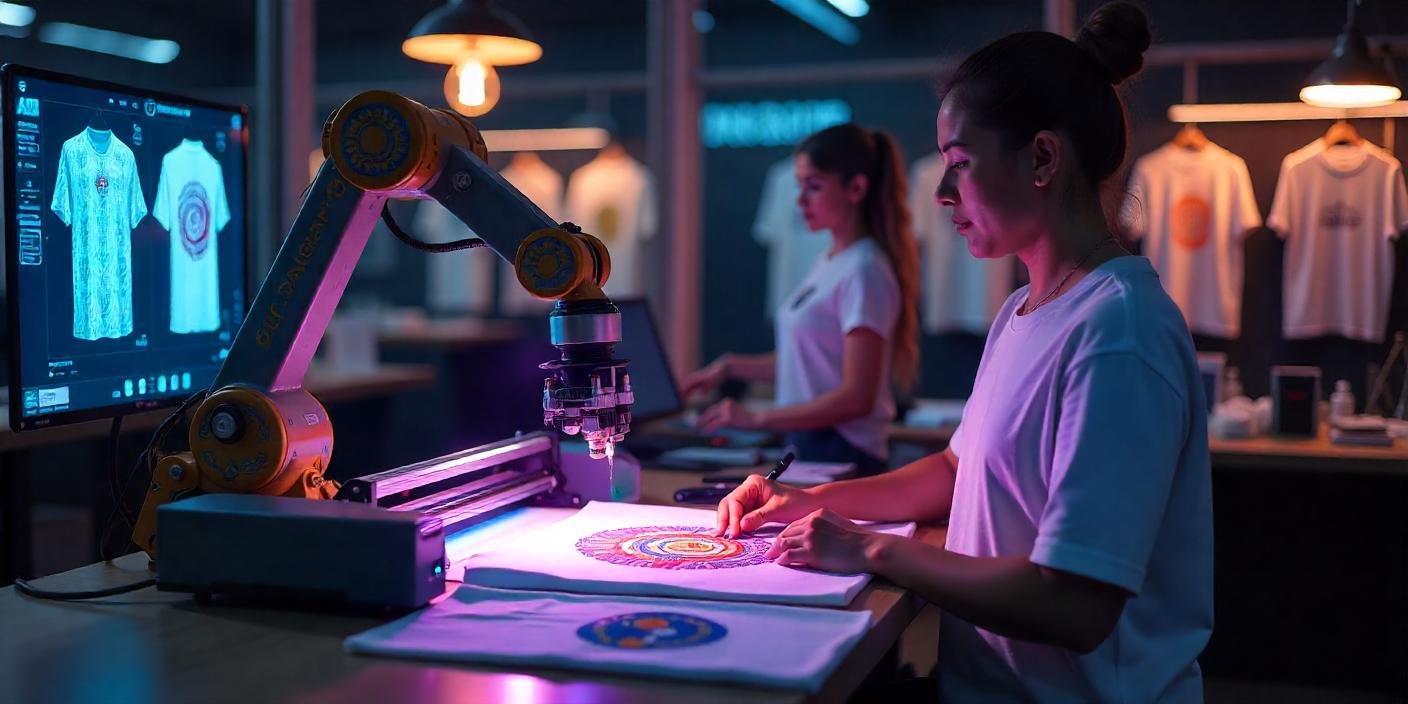Emerging Trends in Custom Printing: What to Expect in the Future of Apparel Design
Custom printing continues to transform the apparel industry, enabling brands and individuals to create personalized, meaningful, and highly detailed clothing. As technology, consumer demands, and sustainability trends evolve, the future of custom printing in fashion looks increasingly dynamic. New printing methods, materials, and creative directions are pushing boundaries and reshaping how we think about customized garments.
This article explores emerging trends in custom printing, providing a forward-thinking look at where apparel design is heading and how businesses can stay ahead of the curve.
The Shift Toward Sustainable Printing Practices
One of the most influential movements in custom apparel design is sustainability. Consumers are becoming more environmentally conscious and are demanding transparency and eco-friendly production methods. This shift has led to innovations in both materials and printing processes.
Water-based inks are gaining popularity for their low environmental impact compared to plastisol-based inks. They are free from harmful chemicals and result in a softer, more breathable print. Additionally, digital printing uses less energy and water than traditional screen printing, making it a preferred choice for environmentally responsible businesses.
Another notable advancement is the use of organic and recycled fabrics for printing. These sustainable materials reduce waste and carbon emissions while offering the same quality and feel as conventional textiles. As this trend continues to grow, companies like ThreadCo are paying close attention to aligning their practices with environmentally responsible solutions.
Direct-to-Garment (DTG) Printing Gains Momentum
As technology becomes more sophisticated, Direct-to-Garment (DTG) printing is emerging as a leading method for custom apparel. Unlike screen printing, which uses stencils and is ideal for bulk orders, DTG prints designs directly onto fabric using inkjet technology.
DTG is ideal for small batches, one-off items, or designs requiring multiple colors and intricate details. Its precision and efficiency reduce setup time, minimize waste, and allow for greater customization. With consumer demand shifting toward unique, personalized fashion, DTG provides flexibility and faster turnaround times without compromising quality.
While traditional screen printing remains dominant for large orders, DTG is changing the landscape for startups, artists, and niche brands looking for low-volume, high-quality print solutions.
Customization as a Core Element of Fashion
Today’s consumers want more than just stylish clothing—they want to tell their own story. This desire for self-expression has turned personalization into a key selling point. Custom printing offers a powerful way to fulfill that need, with options ranging from monograms and slogans to artistic illustrations and full-color imagery.
This trend has given rise to an entirely new wave of microbrands and fashion lines that are built around hyper-personalization. Platforms that allow customers to design their own shirts, hoodies, or accessories are growing in popularity. As printing technology becomes more accessible, expect to see even more emphasis on creative freedom in everyday fashion.
The Role of Artificial Intelligence in Design Automation
AI is playing an increasing role in the design and printing world. With tools that can auto-generate graphics, analyze consumer preferences, and even predict upcoming design trends, artificial intelligence is becoming a behind-the-scenes powerhouse in the fashion industry.
AI-based design tools are helping brands streamline their workflow, reduce design costs, and produce items that resonate more strongly with target audiences. From layout optimization to personalized recommendations, the integration of AI is poised to revolutionize how brands approach apparel design.
Custom print providers who embrace AI-powered solutions will have a competitive edge, allowing them to offer faster, more accurate, and highly relevant products.
Smart Apparel and Wearable Technology Integration
Another exciting development is the fusion of fashion and technology. Wearable tech and smart apparel are gradually finding their way into custom printed clothing. Fabrics embedded with sensors can now monitor biometrics such as heart rate, temperature, and posture.
Although still in its early stages, this integration opens up possibilities for functional fashion that also carries a custom visual identity. For instance, a fitness shirt could include both a stylish, printed design and built-in technology to track workouts. As innovation continues, apparel companies will need to balance aesthetics with functionality.
Expansion into Non-Traditional Print Surfaces
The boundaries of custom printing are no longer limited to T-shirts and sweatshirts. Designers and businesses are exploring unconventional surfaces for personalization, including outerwear, denim, leather, shoes, and even home goods like pillows and curtains.
This expansion provides more opportunities for branding, artistic expression, and product diversification. It also allows brands to stand out in a saturated market by offering unique and functional pieces that aren’t traditionally associated with custom print.
Heat transfer vinyl, sublimation printing, and UV printing are making these alternative surfaces more accessible. As a result, businesses can broaden their offerings and meet diverse customer demands across industries.
On-Demand Printing for Minimal Waste
As sustainability becomes more than just a buzzword, on-demand printing is stepping into the spotlight. By producing items only when they are ordered, this model drastically reduces overproduction and textile waste.
It also supports small-batch manufacturing, allowing companies to offer seasonal or limited-edition items without the risk of excess inventory. Print-on-demand services, combined with fast shipping and real-time design capabilities, are redefining how custom apparel is produced and delivered.
This efficient production model benefits both businesses and the environment, making it a long-term trend to watch.
Augmented Reality (AR) for Virtual Try-Ons
Retailers are increasingly turning to Augmented Reality to enhance the customer shopping experience. AR apps now allow customers to visualize how a design will look on them before they make a purchase. This digital interaction not only increases buyer confidence but also reduces returns and boosts satisfaction.
By enabling users to experiment with placement, color combinations, and garment styles, AR technology enhances the personalization process and creates a more immersive shopping experience.
Custom print companies that integrate AR technology can differentiate themselves and attract a tech-savvy audience seeking more interactivity.
The Growth of E-Commerce and Direct-to-Consumer Models
The rise of online shopping has propelled custom print businesses into new territory. With the right e-commerce platforms, companies can reach global audiences and manage orders seamlessly. Integrated design tools, payment gateways, and logistics systems make it easier than ever to start a direct-to-consumer apparel brand.
Social media and influencer marketing also play a significant role in spreading brand visibility and driving engagement. Custom apparel has become a vehicle for individual identity, activism, humor, and community building—all of which thrive in digital spaces.
ThreadCo Print, like other industry leaders, continues to adapt to these digital demands by prioritizing flexible printing solutions, quick turnarounds, and interactive online tools that empower users to become creators.
Conclusion: Embracing the Future of Custom Printing
As custom printing technology and trends evolve, businesses and consumers alike will benefit from greater creative control, sustainable options, and integrated digital tools. The future of custom apparel lies in its ability to adapt to changing expectations, incorporating functionality, personalization, and eco-consciousness in equal measure.
By embracing new printing methods, intelligent design tools, and sustainable practices, businesses can stay relevant and innovative. As the market continues to expand beyond traditional fashion, brands like ThreadCo Print are well-positioned to lead the charge in shaping the next chapter of custom printed apparel.



